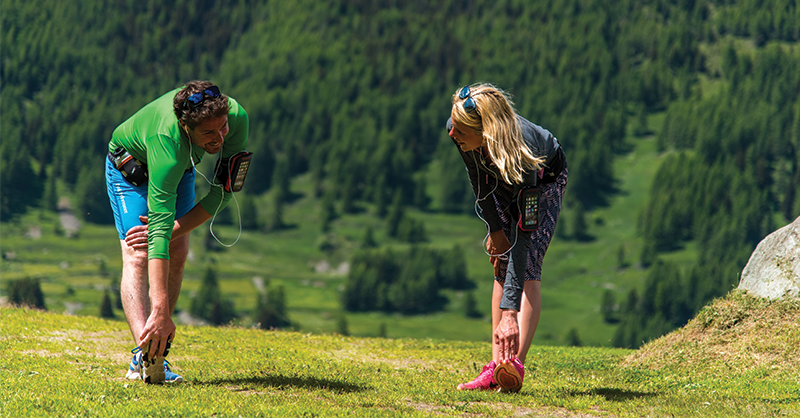Your Cart is Empty
5 Top Tips For Choosing a Running Belt
January 31, 2021 4 min read

[et_pb_section fb_built="1" admin_label="section" _builder_version="3.22"][et_pb_row admin_label="row" _builder_version="3.25" background_size="initial" background_position="top_left" background_repeat="repeat"][et_pb_column type="4_4" _builder_version="3.25" custom_padding="|||" custom_padding__hover="|||"][et_pb_text admin_label="Text" _builder_version="4.0.9" background_size="initial" background_position="top_left" background_repeat="repeat" hover_enabled="0"]
If you type “running belt” into Google, you are faced with thousands of brands, thousands of models, and thousands of features. Amazon.com shows over 42,000 different models! Yet, choosing a good runners belt is just as important as good running shoes. Where do you start in the hunt for an ideal belt?
5 Tips for Choosing a Running Belt
Looking for a new running belt may seem like an easy enough task, but one quick search can quickly become overwhelming. With thousands upon thousands of running belts to choose from, how do you know which one is best for you? What features should you look for?
- Find the right running belt fit
- Look for hydration capabilities
- Be mindful of pouch size
- Pay attention to material type
- Spring for necessary extras
Below, we go into more detail on how to choose the best running belt for you and your goals.
1. Find the right running belt fit
The ideal position for your running belt is with the pouch in front, positioned low and at the widest part of your hips. Make sure you measure your hips beforehand to make sure you find the right-sized belt. And if the running belt has adjustable straps — even better! That’s because you want to be able to adjust it so it’s nice and snug against your body and won’t bounce around while you run.
Another feature to look for? Silicone grippers. All Fitletic running belts are designed with these to prevent your running belt from bouncing and will help prevent chafing. Finally, look to see that the belt’s design is evenly distributed, so there is minimal interference while you run.
Our choice: Bolt Fit Running Pouch
2. Look for hydration capabilities
Staying hydrated while you run or train for a big race is crucial. It helps reduce your chances of fatigue, heatstroke, and dehydration. Depending on your hydration needs (and how long you plan to run), you may need more or less space for bottles on your running belt. At Fitletic, we offer different types ofhydration running belts to fit every runner’s needs:
- A fully loaded sports belt with 1 or 2 (12 or 16 oz.) bottles
- A simple water pouch with 1 bottle
- A sports belt with aholster for your own bottle (up to 20 oz.)
Whichever you choose, make sure that the bottles are easy to use, single-handed, and come with a quick-flow spout and silicone mouthpiece. Sliding the bottle in and out of the holsters should be smooth so you’re not slowed down or spill water on yourself while hydrating.
Our choice:Hydra 12 Hydration Belt
3. Be mindful of pouch size
No run would be complete without a smartphone on-hand for music and fitness apps. And if you’retraining for a 5K or simply want to carry a bit more, you may also want a larger pouch to hold additional fuel like protein bars, cards, and cash. When it comes to running belts, there are a few different choices for securing your phone and other goods:
- Aphone armband
- A running belt with an enlarged pouch (ideal for larger smartphones)
- A running belt with an add-on phone pouch
No matter which you choose, consider whether you’ll be operating your phone often while you run. If that’s the case, you might opt for a band or belt with aclear touchscreen window so you can use your phone without taking it in and out of the pouch.Pro tip:If you use corded headphones, make sure your belt has easy access to your phone’s headphone port.
Our choice: Swipe Running Belt with a Window
4. Pay attention to material type
It’s important to check which materials are used for running belts since some are more effective at regulating heat and preventing sweat from seeping through. At Fitletic, our running belts are made with Neoprene fabric, which is lightweight, elastic, and less bulky than other options.
Another reason you need quality materials? If you are running in rainy conditions, the fabric also needs to be water-resistant to protect your valuables.
Our choice: Neo I Fitness Running Belt
5. Spring for necessary extras
Some running belts are incorporated with added extras to fit your running needs. Consider additional features like:
- Reflective accents for high visibility
- Integrated bib toggles for racing
- Loops forenergy gel packets
- Sunglasses pouch
- Separate case oradd-on for your phone
- Bottle holster add-on
- Interior pocket for ID, cash, and credit cards
- Luminous color options
Our choice: Fully Loaded Water and Gel Belt
Find your best running belt with Fitletic
At the end of the day, choosing the best running belt comes down to your personal preferences. However, we recommend sticking with expert-made running belts by those who have been in your shoes. At Fitletic, we design everything with you in mind, ensuring the best quality materials, features, and fit to make every run your best one yet.
Explore all of ourrunning belts andhydration running belts to find the right fit for you!
[/et_pb_text][/et_pb_column][/et_pb_row][/et_pb_section]







